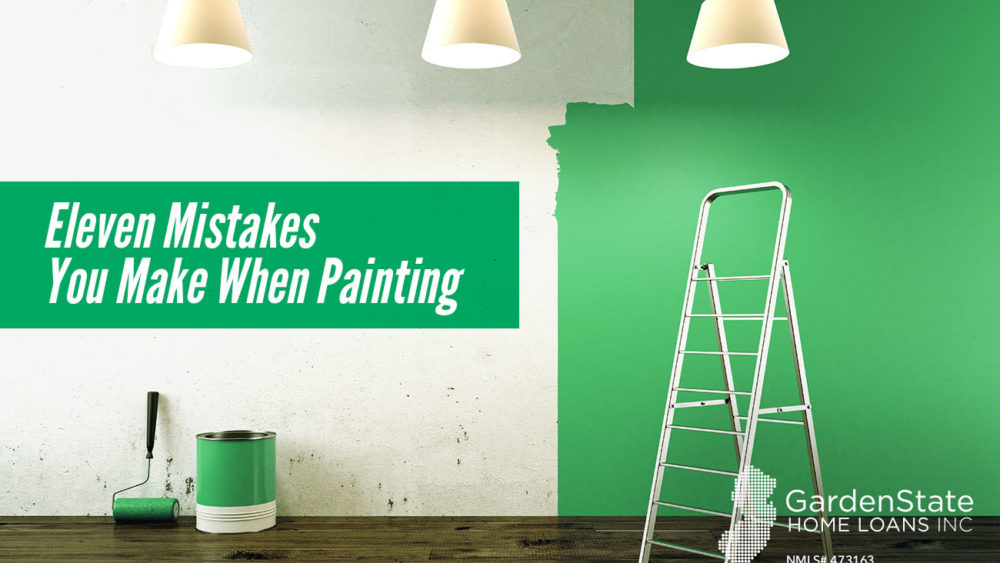Painting Mistakes
Painting is one the most common home improvement tasks that homeowners do on their own. If you decide to paint your room by yourself, make sure to not make these mistakes.
-
Skipping prep time
Professional painters spend much of their time on prep work. Make sure you’ve properly cleaned your walls, scraped off peels and cracks, applied painter’s tape properly, and allow for patching compound to dry. To properly clean your walls, begin by running a vacuum over the walls. Then mix together a gallon of warm water and two cups of vinegar. Use a rag to wash the wall. Don’t forget about the corners and baseboards!
-
Buying cheap brushes and roller covers
Cheap brushes can make the whole project fail, no matter how good your paint is. High-quality brushes and roller covers will give you better coverage and save you on paint in the long run. In addition, brushes can last for years if you take proper care of them.
-
Using masking tape instead of painter’s tape
Painter’s tape will give you clean, precise lines that masking tape just won’t. Professional painters use painter’s tape, so you should too! When applying painter’s tape, use a putty knife or mini scraper to remove air bubbles and seal the edges. This will prevent drips and ensure sharp lines.
-
Not using primer
Primer covers any flaws in the wall surface and creates a smooth, long-lasting finish. If your wall currently has a flat, or non-glossy, finish, and is still in good shape, you can use a paint-and-primer in one mix. However, if you are working with a more difficult surface, such as a plaster, wood, stained/porous drywall, concrete, or glossy paint, use a stand-alone primer. You can also use a premium all-in-one primer and paint mix.
-
Dipping your brush too far
Don’t dip your paintbrush all the way into the paint. You should only need to dip the brush in about a third of the way. Any deeper and the paint settles deep in the bristles, making it difficult to clean.
-
Painting aimlessly
For the smoothest finish, start near the ceiling and work your way down. This way, you can catch any drips that fall as you work.
-
Using flat paint in high traffic areas
Satins or semi-glosses work best for areas that get a lot of foot traffic, such as a closet or the laundry room.
-
Painting over wallpaper with water-based paint
If you don’t want to take down wallpaper before painting, be sure to first use an oil-based primer. Any water-based paints or primers can reactivate the wallpaper glue, which can lead to the glue peeling.
-
Painting over high-gloss without sanding
New paint needs texture to adhere to. To create this texture, lightly scruff shiny surfaces with sandpaper. Afterward, rinse the area with cold water.
-
Not waiting for paint to dry before a second coat
You need to wait for the first coat to dry before painting on a second coat. If you paint the second coat too quickly, the paint can peel or your brush strokes can be visible. Follow the instructions on your paint to find out drying times. If you can’t find drying times, wait 24 hours before adding the second coat.
-
Skipping cleanup
Protect your paint investment by washing your brushes properly, with water and dish detergent. Wrap the brushes with airtight plastic wrap or aluminum foil. Store them in their original packaging. This will help the brush hold its shape.


Comments are closed.